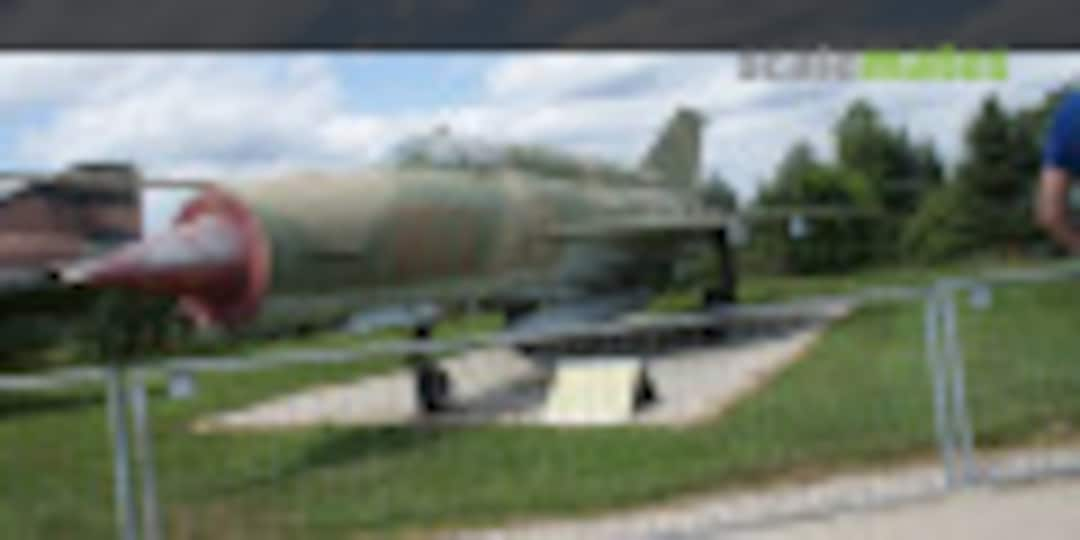MiG-21F-13 - Egypt - 1973
Commentaires
I have to agree. A very attractive scheme! I'll pay close attention to the rest of the build as I have just started the same kit.
Nice paintjob Marius!
I have a Mig 21 PFM kit from R.V.Aircraft in my stash. Still one of the nicest Mig's around!
Thank you Dick!
Yeah, the RV Aircraft MiG-21s are quite nice kits. They have some inaccuracies in shape here an there but nothing very critical. On the other hand, the Eduard PFMs are just superb, I've managed to finish 3 and one more is planed:
MiG-21PFM - Vietnam - Red 5015 (Ace) | Album by Redicus (1:72)
MiG-21PFM - Vietnam - Red 5020 | Album by Redicus (1:72)
MiG-21 PFM - Egypt - 1973 | Album by Redicus (1:72)
So I highly recommend the Eduard kits. Unfortunately it's not very clear when Eduard is going to release the MiG-21F-13 in the same quality. Until then, we only have the Revell kit as reasonable option, which requires quite some work.
Overall I think the F-13s and PFMs are the coolest looking versions of MiG-21.
Thank you Pierre and Robin! I have to admit, the pictures aren't really the best unfortunately.
Very nice trio, Marius. Great job on all 👍
I would like to see one day a photo with all your Mig-21 together 🙂
Thank you guys!
@Cuajete, haha, that would be a challenge, since I won't be able to fit more than 3 of them at once in the photobooth, so I need to find some other place for all 12 of them. Until then, you can see al of them in this overview here (click on the link below, hope it works):
Redicus
Wow... great collection. I agree with Sylvain. Thx for the link, Marius 👍
Thank you guys!
Will try one day to fit all of those MiG-21s in one photograph.
Album info
Although suffering considerable losses in 1967 during the Six Day War (mostly on ground), the MiG-21F-13 in UARAF/EAF service had proven its qualities during the War of Attrition with its powerful 30mm cannon and outstanding maneuverability. The type was particularly popular among the pilots of the No. 25 and No. 26 Squadrons.
The No.26 Squadron was the only UARAF MiG-21 unit active in combat on the 6th of June 1967 in the openning phases of the Six Day War. Until the end of the war, the unit claimed several air victories against the IDF aircraft. None of the Egyptian MiG-21s, regardless of version, had ANY camouflage painting at all before or during the Six Day War, all of them being left in their natural metal finish as delivered from the USSR. Nevertheless, this changed immediately after the war due to the lessons learned. Among other camouflage schemes, several MiG-21F-13s received also the sand and dark green-olive camouflage pattern immediately after the Six Day War in July 1967, almost identical in pattern to my current subject. The aircraft of the No. 26 Squadron are known to have carried mostly this camouflage pattern, although there were also a couple of exceptions. Until the October War of 1973, the Egyptian MiG-21F-13s were repainted several times, therefore showing some variations when compared to the camouflage paint received in July 1967.
The No. 26 Squadron was highly succesful during the War of Attrition having earned its reputation of being the elite interceptor unit of the EAF. Although the EAF was already equipping newer and presumably better versions of the MiG-21, the No. 26 was still equipping the older MiG-21F-13 as late as the Ramadan War of 1973 and beyond. The younger and less experienced pilots of the newly delivered MiG-21MF (as of 1972 in other units) had dual air and ground attack roles and relied during air combat too much on the aiming system of the close to useless R-3S missiles. On the other hand, the pilots of the No. 26 squadrons were highly experienced pilots and trained exclusively on air combat mastering the cannon fire and preferring overall the lighter and more manouvrable MiG-21F-13. As a reminder, all MiG-21 versions developed after the F-13 until the MF had no incorporated cannon any more (similar to some early F-4 Phantom versions), which was proven to be a fatal design mistake.
During the Ramadan War of 1973, the elite No. 26 Squadron was not called in action until the very late phases of the war. This caused frustration and complains among the pilots, especially while hearing the reports and radio communications regarding signifficant EAF losses.
The symbol of the No.26 Squadron was a black raven with the number "26" painted on the nose on both sides. Although not all aircraft of the 26th Squadron have had the black raven on the nose, there are photographs of at least two different machines which had it.
My subject, the number 5843, is somewhat the "flagship" of the No 26 Squadron and was piloted by Reda el-Iraki. The number 5843 had presumably three small blue stars under the right side of the cockpit (as stated by El-Iraki himself), denoting three claimed victories from during the War of Attrition. Both the No. 25 and the No. 26 Squadrons claimed further air victories in the chaotic last days of Ramadan War. The number 5843 subsequently survived the Ramadan War and is known to have taken part in further future military exercises.
The MiG-21F-13 of the No. 26 Squadron continued flying in the same camouflage scheme and unit markins until their withdrawal from service in the mid 1980s therefore showing conseriderable fatigue and patina in the last years of service.
Group Build

15. Mars jusqu'à 31. Décembre 2021



























